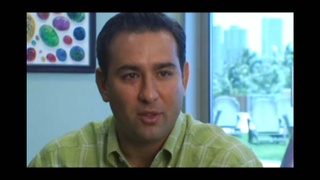Interviews
First learning about the incarceration experience in college
So I started to take some of their basic classes that introduced us to, again, issues of identity, roots, the Roots Reader, the Asian American reader had come out, exploring issues of identity and who we are and how we fit into this society. We look different, we're treated different, perhaps, when people see us, and how do we live with that and how do we break out of whatever stereotypes exist?
And aside from issues of identity, of course, issues of history. We learned about the emigration, Asian American immigration—Asian immigration to this country, learned about the treatment of Chinese, Japanese, and the various Asian, Pacific American ethnic groups. And as part of that, of course, learned about the internment of Japanese Americans. And it's the first time that I really learned about what had actually happened during the camps. After hearing references to camp just very sporadically during my youth, it was the first time that I was able to actually read about camps and see where the camps were located and what they were like and what had happened to give rise to the camps.
Date: March 23 & 24, 2000
Location: Washington, US
Interviewer: Margaret Chon, Alice Ito
Contributed by: Denshō: The Japanese American Legacy Project.
Explore More Videos

Traumatic experiences before camp
(1913-2013) Doctor specializing in obstetrics in Southern California

“Everybody went in like sheep”
(1913-2013) Doctor specializing in obstetrics in Southern California


Working tirelessly after the war (Japanese)
(1928 - 2008) Drafted into both the Japanese Imperial Army and the U.S. Army.


Discrimination for Nisei doctors
(1928–2016) Daughter of an Issei doctor


Being Denied as a Japanese American Lawyer
(b. 1934) The First Japanese American Appointed to the U.S. Court of Appeals.


Feeling prejudice while looking for jobs
(1919 - 2015) Nisei who served in World War II with the 442nd Regimental Combat Team

Invited to teach at Harvard by his boss
(1919 - 2015) Nisei who served in World War II with the 442nd Regimental Combat Team

Discrimination faced in San Francisco (Japanese)
(b. 1937) A war bride from Yokohama

Accepted by Japanese society as I learned more Japanese (Japanese)
(b. 1979) Sansei Nikkei Brazilian who lives in Oizumi-machi in Gunma prefecture. He runs his own design studio.

Mother founded Japanese language school in neighbors’ backyard
Sansei judge for the Superior Court of Los Angeles County in California

Her brother’s reasons as a No-No Boy
(b. 1923) Japanese American poet, activist
